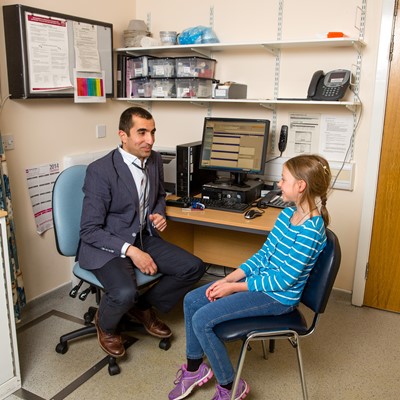Good practice recommendations for re-dosing antibiotics for surgical prophylaxis in adults
Re-dosing antibiotics for surgical prophylaxis to maintain antibiotic concentrations during prolonged surgical procedures can significantly reduce the rate of surgical site infections.1 Guidance on when to re-dose varies, NICE Guideline 1252 states to give a repeat dose of antibiotic prophylaxis when the operation is longer than the half-life of the antibiotic given; United States guidance advises re-dosing after two half-lives3. These SAPG good practice recommendations are based on current good practice in NHS boards in Scotland, published evidence, and information on antibiotic half-lives.
The following should be taken into account when using this guidance:
- For procedures lasting more than 4 hours, re-dosing (where indicated) after 4 or 8 hours promotes safe and effective surgical prophylaxis.
- This guidance does not cover surgery lasting for longer than 10 hours.
- Decisions around re-dosing should be made on an individual patient basis taking account of the risks and benefits of repeat dosing.
- These recommendations on re-dosing are for patients with normal renal and hepatic function unless otherwise stated.
- Patients with complex management requirements should be discussed with microbiology in advance.
- These recommendations include re-dosing advice where there is intraoperative blood loss of 1500mL or more.4,5 It is not recommended to give a repeat dose of antibiotics after every subsequent 1500mL blood loss and specialist advice is needed where blood loss exceeds 3000mL.
Dosing recommendations:
|
Drug |
During the procedure |
If there is blood loss above 1500mL |
Drug half-life in healthy adults |
|
|
After 4 hours |
After 8 hours |
|||
|
Amoxicillin |
Repeat original dose |
Repeat original dose (again) |
Repeat original dose |
1 hour |
|
Aztreonam |
Repeat original dose |
Repeat original dose (again) |
Repeat original dose |
2 hours |
|
Cefazolin |
Repeat original dose |
Repeat original dose (again) |
Repeat original dose |
2 hours |
|
Ceftriaxone |
Not required |
Not required |
Repeat original dose |
6 – 9 hours |
|
Cefuroxime |
Repeat original dose |
Repeat original dose (again) |
Repeat original dose |
70 minutes |
|
Clarithromycin |
Not required |
Repeat original dose |
Repeat original dose |
3 – 7 hours |
|
Clindamycin |
Repeat original dose |
Not required |
Repeat original dose |
3 hours |
|
Co-amoxiclav (Amoxicillin + clavulanic acid) [see 'additional information about amoxicillin and co-amoxiclav' below] |
Repeat original dose |
Repeat original dose (again) |
Repeat original dose |
1 hour |
|
Co-trimoxazole |
Not required |
Not required |
Repeat original dose |
9 – 17 hours |
|
Gentamicin [see 'additional information about gentamicin' below] |
Not required |
[see 'additional information about gentamicin' below] |
Give half original dose |
3 hours |
|
Flucloxacillin |
Repeat original dose |
Repeat original dose (again) |
Repeat original dose |
1 hour |
|
Metronidazole |
Not required |
Repeat original dose |
Repeat original dose |
8 – 10 hours |
|
Teicoplanin |
Not required |
Not required |
Give half original dose if 1500mL or more blood loss within first hour of operation |
100 – 170 hours |
Additional information about amoxicillin and co-amoxiclav:
The American Society of Health-System Pharmacists, Infectious Diseases Society of America, Surgical Infection Society, and Society for Healthcare Epidemiology of America recommend re-dosing ampicillin after 2 hours (note: amoxicillin and ampicillin have similar pharmacokinetic profiles)3 Consider re-dosing interval reflecting on local current practice and postoperative infection rates.
Additional information about gentamicin:
Literature suggests re-dosing of gentamicin is not required when a single dose of 5 mg/kg is used. A lower dose or alternative antibiotic is recommended in patients with reduced renal function (Creatinine Clearance [CrCl] less than 20mL/min). A pharmacokinetic evaluation of gentamicin dosing regimens in abdominal surgery found 3 mg/kg was comparable to 5 mg/kg at 6 hours from prophylactic dose.4 However, longer surgeries, eg over 8 hours, may require re-dosing in patients with normal renal function. Consider re-dosing with 2.5 mg/kg after 6 hours following a 5mg/kg dose in patients with CrCl over 50mL/min undergoing colorectal surgery.6 Renal toxicity has been observed in patients receiving flucloxacillin and gentamicin for surgical prophylaxis in orthopaedic surgery; therefore, in these instances consider lower doses or alternative antibiotics. As an alternative to gentamicin, consider co-amoxiclav, or if penicillin allergy, ciprofloxacin.
Reviewed by: Association of Scottish Antimicrobial Pharmacists (ASAP)
Scottish Antimicrobial Prescribing Group (SAPG) | August 2025 for review August 2028
Content updated: October 2025

Care homes
View our guidance on managing common infections in care homes.

Primary care
How we help health and social care staff in community settings improve the use of antibiotics.

